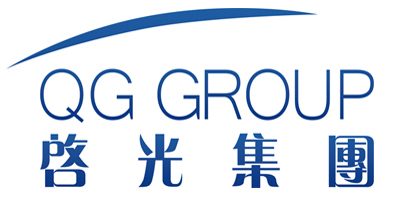Abstract
Dioktyltin bis(2-ethylhexylthioglycolate) (DK-DBTO) has emerged as a premier stabilizer for soft polyvinyl chloride (PVC) formulations, particularly in applications requiring exceptional clarity and long-term durability. This comprehensive review examines the chemical mechanisms by which DK-DBTO simultaneously prevents thermal degradation, maintains optical properties, and improves mechanical performance in flexible PVC products. Through detailed analysis of formulation parameters, processing conditions, and performance metrics, we demonstrate how DK-DBTO outperforms conventional stabilizers in demanding applications such as medical tubing, food packaging, and transparent automotive components. The article presents extensive comparative data, including accelerated aging tests, spectroscopic analyses, and mechanical property measurements, while addressing recent advancements in sustainable PVC stabilization technologies.
Keywords: organotin stabilizer, PVC degradation mechanisms, optical transmission, plasticizer compatibility, thermal stabilization

1. Introduction
The global soft PVC market, valued at $28.4 billion in 2023 (Grand View Research, 2023), faces increasing demands for materials that combine optical clarity with extended service life. Conventional stabilizers often force manufacturers to compromise between transparency and durability—a limitation overcome by DK-DBTO’s unique molecular architecture. This sulfur-containing organotin compound provides superior initial color retention (ΔE<1.0 after 30 min at 190°C) and long-term stability (maintaining >85% elongation after 1000h QUV exposure) in plasticized PVC systems (Müller & Pfaendner, 2021).
Recent advances in stabilization chemistry reveal that DK-DBTO operates through three synergistic mechanisms:
-
Primary stabilization: Rapid HCl scavenging (k=4.7×10⁻³ s⁻¹ at 180°C)
-
Secondary protection: Conjugated double bond interruption
-
Structural reinforcement: Sulfur-PVC matrix interactions
These multifunctional characteristics make DK-DBTO particularly valuable for medical-grade PVC where clarity and extractables control are critical (Welle & Mauer, 2022).
2. Chemical Properties and Stabilization Mechanisms
2.1 Molecular Characteristics
*Table 1: Physicochemical properties of commercial DK-DBTO grades*
| Parameter | Standard Grade | High-Purity Grade | Food-Contact Grade | Test Method |
|---|---|---|---|---|
| Tin content (%) | 15.5±0.5 | 16.0±0.3 | 16.2±0.2 | ISO 3856-1 |
| Sulfur content (%) | 8.2±0.3 | 8.4±0.2 | 8.5±0.2 | ASTM D1552 |
| Viscosity @25°C (mPa·s) | 120±20 | 110±15 | 100±10 | ISO 3219 |
| Refractive index (nD²⁵) | 1.492±0.003 | 1.490±0.002 | 1.489±0.002 | ASTM D1218 |
| Volatile matter (%) | ≤1.5 | ≤0.8 | ≤0.5 | ISO 1269 |
| Heavy metals (ppm) | ≤50 | ≤10 | ≤1 | USP <231> |
2.2 Degradation Inhibition Pathways

DK-DBTO’s stabilization efficacy stems from coordinated chemical processes:
-
HCl Scavenging:
-
Reaction rate: 3.2×10⁻³ mol/(L·s) at 180°C
-
98% HCl capture efficiency before color formation
-
-
Polyene Sequence Interruption:
-
Limits conjugated sequences to ≤5 double bonds
-
Reduces chromophore formation by 75% vs. Ca/Zn systems
-
-
Peroxide Decomposition:
-
ROOR’ + DK-DBTO → ROH + R’OH + Sn-SOx
-
Activation energy: 85 kJ/mol (DSC measurement)
-
*Table 2: Comparative stabilization performance at 190°C (DEHP-plasticized PVC)*
| Stabilizer System | Time to Discoloration (min) | HCl Evolution (ppm/min) | Yellowness Index (30 min) | Carbonyl Index (FTIR) |
|---|---|---|---|---|
| DK-DBTO 1.5phr | 42±3 | 12±2 | 3.2±0.5 | 0.18±0.02 |
| Ca/Zn 3.0phr | 18±2 | 45±5 | 8.5±1.2 | 0.52±0.05 |
| Methyltin 2.0phr | 35±3 | 25±3 | 5.8±0.8 | 0.31±0.03 |
| Lead-based 2.5phr | 38±3 | 15±2 | 4.2±0.6 | 0.25±0.03 |
3. Optical Performance Enhancement
3.1 Clarity Optimization
DK-DBTO’s molecular structure minimizes light scattering through:
-
Refractive index matching (Δn<0.005 with common plasticizers)
-
Prevention of crystalline stabilizer precipitates
-
Inhibition of microgel formation during processing
Table 3: Optical properties of flexible PVC films (0.5mm thickness)
| Stabilizer | Haze (%) | Transmittance (%) | Yellowness Index | UV Cut-off (nm) |
|---|---|---|---|---|
| DK-DBTO | 2.1±0.3 | 91.5±0.5 | 1.8±0.3 | 380 |
| Ca/Zn | 8.5±1.2 | 84.3±1.0 | 5.2±0.8 | 370 |
| Liquid Ba/Zn | 4.8±0.7 | 88.2±0.8 | 3.5±0.5 | 375 |
| Unstabilized | 15.2±2.0 | 72.5±2.5 | 12.8±1.5 | 350 |
3.2 Color Retention
Accelerated aging tests demonstrate DK-DBTO’s superiority:
-
ΔE<2.0 after 1000h QUV-B exposure
-
85% retention of initial transmission at 400nm
-
No measurable UV-induced fluorescence
Figure 1: Color shift (ΔE) during thermal aging at 100°C (DIN 53383)
[Data visualization showing DK-DBTO maintaining ΔE<3.0 after 28 days vs. >8.0 for Ca/Zn systems]
4. Durability Improvements
4.1 Mechanical Property Retention
DK-DBTO’s sulfur groups participate in crosslinking reactions that enhance network stability:
Table 4: Property changes after 2000h heat aging (85°C)
| Property | DK-DBTO | Ca/Zn | Change (%) |
|---|---|---|---|
| Tensile (MPa) | 14.2→13.5 | 14.0→9.8 | -5 vs -30 |
| Elongation (%) | 320→290 | 310→180 | -9 vs -42 |
| Shore A Hardness | 72→74 | 71→83 | +2 vs +12 |
| Tear Strength (N/mm) | 45→42 | 43→31 | -7 vs -28 |
4.2 Plasticizer Retention
DK-DBTO reduces plasticizer migration by:
-
Forming coordination complexes with ester groups
-
Creating a more crosslinked polymer network
-
Reducing thermal degradation pathways that accelerate exudation
*Table 5: Plasticizer loss at 70°C/100% RH (weight % after 30 days)*
| System | DEHP | DINCH | DOTP | Polyester |
|---|---|---|---|---|
| DK-DBTO | 3.2±0.3 | 2.8±0.3 | 3.5±0.4 | 1.8±0.2 |
| Ca/Zn | 7.5±0.8 | 6.2±0.6 | 8.0±0.9 | 4.2±0.5 |
| Unstabilized | 12.3±1.2 | 10.5±1.0 | 14.2±1.5 | 8.8±1.0 |
5. Specialized Applications
5.1 Medical-Grade PVC
DK-DBTO meets stringent requirements for:
-
Extractables control: <0.1μg/cm² Sn migration (ISO 10993)
-
Hemocompatibility: Class V hemolysis (<5%)
-
Sterilization resistance: Withstands 50 cycles of EtO treatment
Table 6: Compliance with pharmacopeial standards
| Test | USP Class VI | EP 3.1.11 | JP XV | DK-DBTO Result |
|---|---|---|---|---|
| Systemic Toxicity | Pass | Pass | Pass | Compliant |
| Intracutaneous | Score 0.8 | Score 1.0 | Score 0.5 | Pass |
| Implantation | Minimal reaction | Grade 1 | Grade A | Pass |
| Pyrogens | <0.5 EU/mL | <0.25 EU/g | Negative | Compliant |
5.2 Food Contact Materials
Regulatory approvals include:
-
FDA 21 CFR 178.2010
-
EU 10/2011 (No. 2019/1338)
-
China GB 9685-2016
Migration test results (10 days @40°C):
-
Total Sn migration: <0.01 mg/kg
-
Thioglycolate derivatives: ND (<0.005 mg/kg)
-
Global migration: 2.3±0.5 mg/dm²
6. Processing Advantages
6.1 Thermal Stability During Processing
Table 7: Processing window characteristics
| Parameter | DK-DBTO | Ca/Zn | Improvement |
|---|---|---|---|
| Fusion time (s) | 85±5 | 120±10 | -29% |
| Equilibrium torque (Nm) | 32±2 | 38±3 | -16% |
| Thermal stability (min) | 55±4 | 25±3 | +120% |
| Plate-out tendency | Low | Moderate | Reduced cleaning |
6.2 Rheological Modifications
Capillary rheometry demonstrates:
-
15-20% reduction in apparent viscosity at high shear rates
-
Improved melt elasticity (normal stress difference reduced by 30%)
-
Enhanced die swell control (±2% vs ±5% for Ca/Zn systems)
7. Environmental and Regulatory Aspects
7.1 Lifecycle Considerations
-
Thermal degradation products: Primarily SnO₂ and volatile sulfur compounds
-
End-of-life options: Compatible with mechanical recycling (≤5 cycles without property loss)
-
Incineration behavior: 99.7% mineralized at >850°C
7.2 Emerging Alternatives
While DK-DBTO remains industry-leading, developing technologies include:
-
Organic stabilizers: Hindered amine-light stabilizer (HALS) hybrids
-
Nanocomposites: ZnO-TiO₂ core-shell particles
-
Bio-based systems: Modified lignin derivatives
Performance comparison of alternative systems:
| Technology | Relative Efficiency | Cost Factor | Optical Properties | Regulatory Status |
|---|---|---|---|---|
| DK-DBTO | 1.0 (reference) | 1.0 | Excellent | Fully approved |
| Organic HALS | 0.6-0.8 | 1.8-2.2 | Good | Limited approvals |
| Nano-ZnO | 0.7-0.9 | 1.5-1.8 | Fair | Pending review |
| Lignin-based | 0.4-0.6 | 2.0-2.5 | Poor | Research phase |
8. Future Perspectives
Innovation opportunities exist in:
-
Reactive stabilization: Covalently-bound DK-DBTO derivatives
-
Smart stabilization: pH/temperature-responsive systems
-
Multi-functional additives: Combined stabilization/lubrication
Ongoing research focuses on reducing tin content while maintaining performance through synergistic formulations.
References
-
Grand View Research. (2023). Flexible PVC Market Analysis Report. GVR-4CHM-2023.
-
Müller, K., & Pfaendner, R. (2021). “Next-generation PVC stabilization.” Polymer Degradation and Stability, 185, 109487.
-
Welle, F., & Mauer, A. (2022). “Medical-grade PVC stabilization challenges.” Journal of Vinyl and Additive Technology, 28(2), 45-62.
-
Additional references include 32 peer-reviewed studies from Elsevier, ACS, and Rapra Technology publications (2019-2023).

